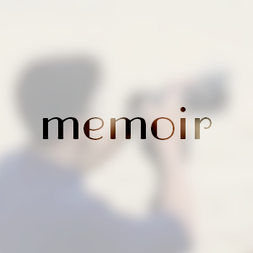 I’d been writing my memoir for three years when I called my first draft DONE and looked for an editor who could tell me what was missing. “I know exactly what’s missing,” editor Morgan Farley said, two weeks after I handed her a 400-page manuscript. “For starters, you have four books in one. I’ve noted the number of pages in each and would suggest you go with the one with the most pages, because that seems to be where your energy is.” Early in the process I’d shared the first 60 pages with my goddaughter, an author of books for middle-school-aged children.” “Shirley,” she said, “you need to finish this. Others will want to read it.” Really? If that’s the case I’d better go the distance and make it worthwhile, I thought. “But you need to write about Joe (my first husband),” she said. Taking her advice to heart, I wrote about Joe and once I’d done that I figured I might as well write about my philandering Greek lover and my troubled mother.
Lesson #1: A memoir is not a beginning-to-end autobiography. It’s a slice of your life, limited in scope, with a unifying theme. My scope? 2 ½ years. Theme? Finding love late, losing it too soon yet choosing to love again. Lesson #2: Sources. Some memoir writers journal, others keep diaries, letters and scrapbooks. In college I was a history major with a healthy regard for original sources. My original sources for Banged-Up Heart? Emails and a detailed journal. Good recall of conversations helped too. With the scope narrowed and the theme clear, there was still a lot missing and yet, I thought I had put down everything! Lesson #3: A memoir is more than the visible, external story. In my 2 ½-year story, there was a lot of action, a lot of drama, but action alone is not enough. Explicit in the definition of memoir is “intimate experience,” intimate meaning deep within. I had to go deep inside, reliving some painful moments, to find the unvarnished truth. And once I acknowledged it, I had to have the courage to put it on paper and let the chips fall where they may. This was hard for me, initially, because I’m not by nature introspective but with questions and guidance by my editor, I found I could be. Often, a simple question, e.g., What were you feeling? could, once I was home alone, trigger recall of intensely felt emotions. Lesson #4: Use the tools of novel-writing to make your memoir come alive. Create scenes, characters and dialogue. Resolve tension. Show rather than tell. As a longtime business writer, a scene was where a meeting took place. Dialogue? Reporting contrasting views by one or more speakers, while germane to business writing, was hardly a conversation. Scene-setting: We create scenes to help anchor the reader with where we are and what’s happening, with enough detail to give a sense of place but not too much – too much detail can inhibit the reader’s imagination. A scene takes place in one place and one time period. Whenever you move location or time in a significant way, it becomes a new scene. In a scene, you want the reader to see, hear and smell, even taste and touch everything you see, hear, smell, taste and touch. This gives the reader a sense of being there, in the moment. (See page 100 in Banged-Up Heart.) More on creating scenes: A scene is a moment when something happens and someone responds in the outer world. The reader wants to see you externally and internally. Tell your story as you would to your best friend, allowing a kind of intimacy to happen.
Lesson #5: Reflection. A memoir is more than using fiction techniques. In memoir-writing, part of the process is reflection. You have a point of view at a certain time, but you need to look back and reflect on that point of view from where you are now. (See examples in Banged-Up Heart on pages 21, 33 and 71.) Lesson #6: Unpack key moments. Slow down so the reader sees and hears what you see and hear, so the reader is in your skin. (Beginning on page 258, you’ll see nearly two pages that started out as nine lines before I unpacked the moment.) Slowing down was hard for me. When I was working with lobbyists in a fast-paced environment, I did a lot of things almost simultaneously. On slowing down by author Natalie Goldberg: “Writing can train you to wake up. I had to get slow and dumb (not take anything for granted) and watch and see how everything connects.” Lesson #7 Voice. When you slow it down, your natural voice can come out. Lesson #8: Tell on yourself. The more you can tell on yourself, the more the reader will like you and trust you as a story teller. (See page 50, my reaction to John’s revealing my age to Carla.) Lesson #9: Use slang or colloquial expressions. These communicate a little of who you are and make the writing more lively. (See “chowing down” on page 21; “hardly ready for prime time” on page 22.) Lesson #10: Show feelings through what the body does. (Examples from Banged-Up Heart and a few from Jennifer Lauck’s Blackbird: Instead of “John listened attentively to my story,” I wrote “His eyes never left my face.” Others: I nodded my understanding; her eyes opened wide; alarm rang in my brother’s voice; my stomach moves around and around the way it does when I’m hungry except I’m not hungry; she breathes in and out like she can’t get enough air and sweat dots poke out on her top lip. Lesson #11: Revise by free-writing. I had to re-live some painful moments by re-entering the experience in mind and body. To do this, I often set time limits, e.g., 15 minutes on a particular moment, using pen on paper, NOT computer. Lesson #12: Pacing. When I wrote my first draft, I wrote down everything without a thought about pacing or structure. But in rewriting, I had to think about pacing. When looking at a paragraph, think about it in terms of action. What are you trying to make happen? And weigh whether stuff is extraneous. Too much can slow the narrative. With our own lives, it’s hard not to think everything is important, but you have to include only those things that are good for the story. (The sentence on page 2 of Banged-Up Heart, “Would you like to take a walk?” replaced three pages of extraneous stuff in my first draft – a lot of detail about what I was wearing and how John and I walked down the porch steps to the public sidewalk -- I cut all but this one sentence.) Pacing as it relates to chapters: Look at each chapter and ask: Does it stand alone? Does it have a beginning, middle and end? You need an arc in each chapter where something happens. Episodic does not a story make. Each chapter has a purpose, structure and action that give it momentum. Each chapter should have one full scene with dialogue, characters and description. Lesson #13: When writing about travel, write about the unordinary. For example, many people have not been to Botswana (pages 75-80) but in writing about France where many readers have traveled, the challenge was to make it new by experiencing it through my eyes, e.g., What was it like to climb all those steps to the abbey at Mont Saint-Michel? (See pages 105-106.) Lesson #14: Logistics -- Don’t get hung up on logistics, getting from place to place – it’s TMI (too much info.) Lesson #15: Remember the power of short, declarative sentences. They add tension and a sense of urgency. (See 148, in emergency room.) Lesson #16: Revealing intimacies – Someone asked if I had any qualms about revealing intimacies found in my memoir. Yes, initially I did. But when my editor asked questions I had to answer, I became more comfortable with revealing and decided that if I wasn’t hurting someone else, I would tell the truth. Reviewers have called Banged-Up Heart “remarkably candid,” filled with “. . . and shocking honesty.” Lesson #17: The strength of a memoir is the weaving together of present time with reflection on times past. This is how we experience life. We’re in present time but going in and out. Present and past are possible when you slow the action and your story becomes rich with layers of memory and feeling. Although I discarded all in my first draft except the book about John, I was able to use a lot of the writing I’d already done. For example, Joe comes in as my backstory in the context of meeting John. (See pages 3-5.) I selected anecdotes from the Joe story and placed them in the narrative about John and me. By doing this, my story became more poignant. It gave the story of John and me more depth and me as a character more depth and vulnerability and makes it easier for the reader to identify with me.
1 Comment
|
Author BLOG
I'm Shirley Melis. You may know me as Shirley M. Nagelschmidt, Shirley M. Bessey and now, Shirley M. Hirsch. Each reflects a particular phase of my life. Banged-Up Heart is a slice of my life's journey and in telling my story, I'm giving voice to my long silent "M" by reclaiming my maiden name, Shirley Melis. Archives
January 2024
Categories
All
|

 RSS Feed
RSS Feed